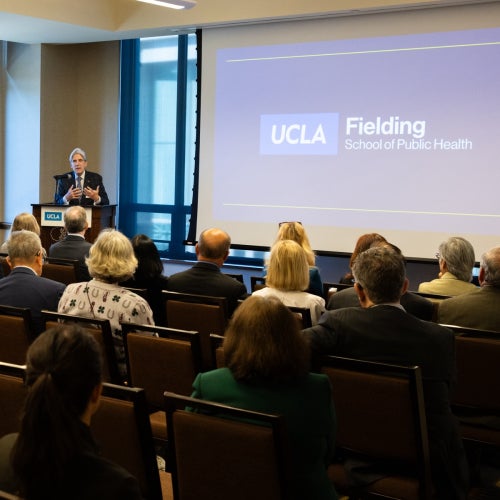"It’s beginning to look a lot like another COVID surge"
The Atlantic interviewed Dr. Anne Rimoin, UCLA Fielding professor of epidemiology, about an apparent rise in COVID-19 infections in the United States.
When I called the epidemiologist Denis Nash this week to discuss the country’s worsening COVID numbers, he was about to take a rapid test. “I came in on the subway to work this morning, and I got a text from home,” Nash, a professor at the City University of New York, told me. “My daughter tested positive for COVID.”
Here we go again: For the first time in several months, another wave seems to be on the horizon in the United States. In the past two weeks, reported cases have increased by 53 percent, and hospitalizations have risen by 31 percent. Virus levels in wastewater, which can provide an advance warning of spread, are following a similar trajectory. After the past two years, a winter surge “was always expected,” Nash said. Respiratory illnesses thrive in colder weather, when people tend to spend more time indoors. Thanksgiving travel and gatherings were likewise predicted to drive cases, Anne Rimoin, an epidemiologist at UCLA, told me. If people were infected then, their illnesses will probably start showing up in the data around now. “We’re going to see a surge [that is] likely going to start really increasing in velocity,” she said.
Winter has ushered in some of the pandemic’s worst moments. Last year, Omicron’s unwanted arrival led to a level of mass infection across the country that we had not previously seen. The good news this year is that the current rise will almost certainly not be as bad as last year’s. But beyond that, experts told me, we don’t know much about what will happen next. We could be in for any type of surge—big or small, long or short, national or regional. The only certain thing is that cases and hospitalizations are rising, and that’s not good.
Read More
Related Faculty

Dr. Anne Rimoin is a Professor of Epidemiology and holds the Gordon–Levin Endowed Chair in Infectious Diseases and Public Health.

Robert J. Kim-Farley, MD, MPH, is a Professor-in-Residence with joint appointments in the Departments of Epidemiology and Community Health Sciences

Dr. Joseph Davey is an infectious disease epidemiologist with over 20 years' experience leading research on HIV/STI services for women and children.



























